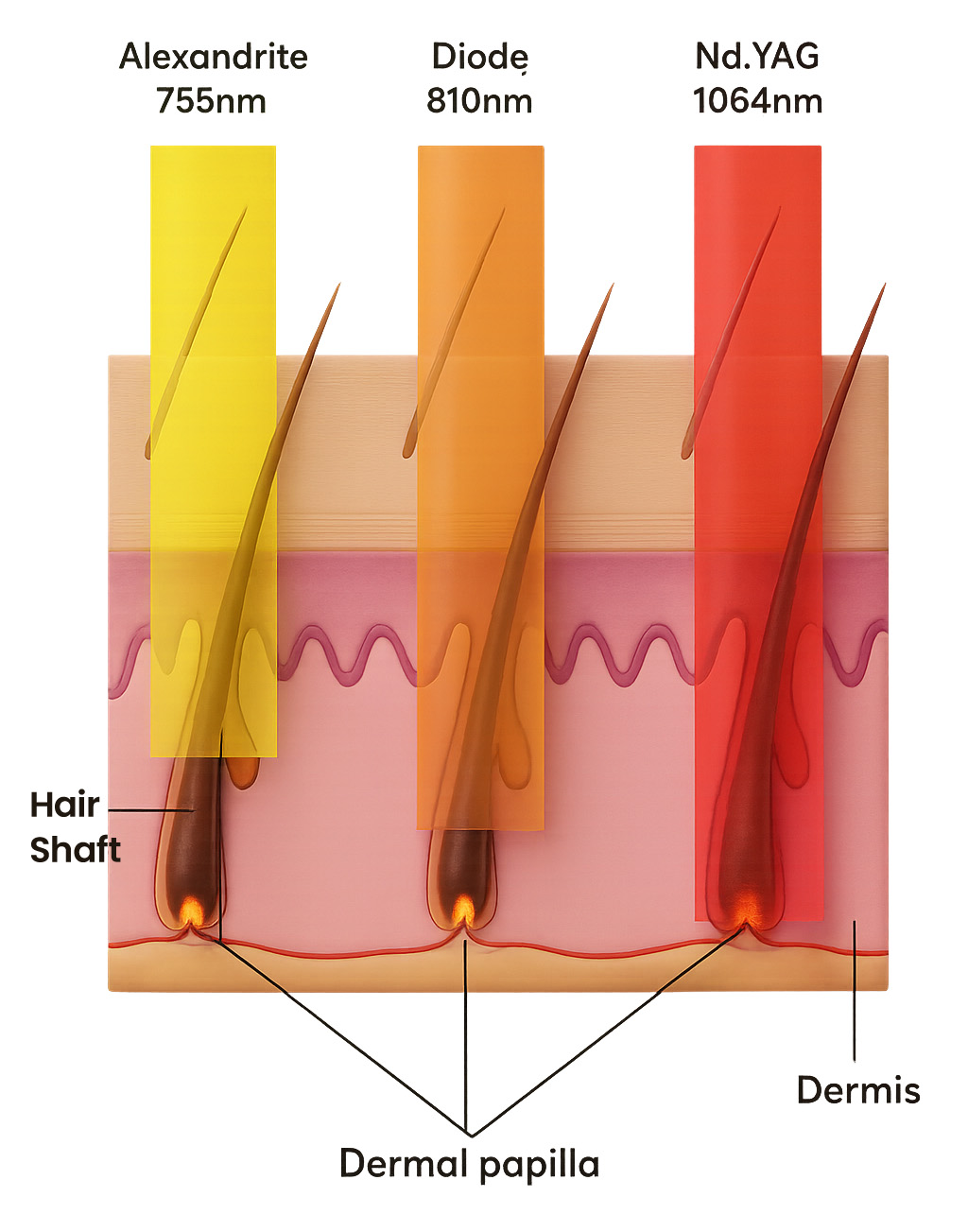Short answer: laser hair removal does not cause cancer. The light used is non ionising, so it does not damage DNA. Medical lasers target pigment in hair follicles, not the cell nucleus, and they do not emit ultraviolet light. You will see temporary skin changes like redness or swelling at times, though those are expected treatment effects rather than anything cancer related.

What the science actually says
Independent health bodies and dermatology texts align on this. Cancer Council Australia explains that hair removal lasers use non ionising radiation, which is generally considered safe and not linked to cancer risk. A peer reviewed overview found no connection between medical laser or intense pulsed light treatments and cancer incidence, across many years of follow up and varied skin types. See the open access NCBI study. Consumer friendly resources echo this position, noting that lasers do not emit UV and that side effects are typically mild and short lived, for example Healthline. Worth adding: some medical lasers are used to treat precancerous lesions on the skin, which underlines how different these technologies are from UV exposure.
01. Quick facts to clear the air
- No UV light: hair removal lasers operate in visible to near infrared bands, not the ultraviolet range associated with skin cancers.
- Non ionising energy: the beam heats melanin in the follicle so the growth cells are disrupted, without mutating DNA.
- Shallow penetration: energy is concentrated in follicles within the skin, not deeper organs.
- Typical reactions: a bit of redness, perifollicular swelling and warmth that settle within hours to a couple of days.
Are there any cancer related concerns at all?
Not from the laser light itself. There is a separate occupational point for practitioners: the smoke like plume released during some procedures can contain ultrafine particles. Sensible clinics use local plume evacuation and appropriate masks, which keeps levels very low. Clients need only standard eye protection and cooling, whereas staff should follow clinic protocols.- Good practice for clinics: local extraction close to the treatment site, room ventilation, suitable masks for staff, and regular maintenance of filters.
- Client safety: protective eyewear that matches the wavelength in use, pre treatment shaving, and cooling for comfort.
02. Who should speak to a clinician first?
- Personal or family history of skin cancer: book a dermatology check if you have a changing mole or suspicious lesion before any cosmetic light treatment.
- Photosensitising medicines: inform your practitioner about isotretinoin, certain antibiotics or herbal products.
- Darker skin tones: choose wavelengths and settings designed for high melanin skin. Nd:YAG is the usual choice, delivered by trained hands.
Why our systems put safety first
The British Institute of Lasers supplies FDA approved platforms with integrated cooling, precise wavelength control and training included. That combination supports effective reduction while protecting surrounding skin.03. Explore the range
- Nu TriLaze Plus: three wavelengths with a built in skin analyser for tailored settings. See the machine page: Nu TriLaze Plus.
- Nu eRays Plus: handpiece controls for quick adjustments and smooth workflows. Details here: Nu eRays Plus.
- Nu TriLaze Lite: portable, clinic grade three in one system for multi room setups. Learn more: Nu TriLaze Lite.
04. Helpful reads, quick wins
- Safety by skin type: our guide to choosing the right wavelength and parameters: How safe is laser hair removal.
- Myths, answered: common misconceptions and the facts behind them: Laser hair removal myths.
- Effectiveness: why multiple sessions matter and what results look like: How effective is laser hair removal.
Author
Follow Me
Dr Majid Zarandouz
Majid holds a PhD in organic chemistry and has been working with laser systems for decades. His career began in the mid-1990s, when he started researching and developing laser-based technologies for medical and cosmetic applications. Over the years, he has combined scientific expertise with practical engineering to design machines that are effective, durable, and straightforward to use in real clinic settings. As director of the British Institute of Lasers, Majid continues to focus on producing equipment that meets professional standards while remaining accessible to businesses of all sizes.
